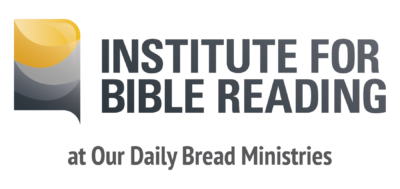From “No Bible” to “Know Bible” Part 6: Living the Story
Editors Note: From “No Bible” to “Know Bible” is a 6-part series on the path toward great Bible engagement. Click here to read Part 1, Part 2, Part 3, Part 4, and Part 5.
What does it mean to receive the Bible on its own terms? Dynamic, living Bible engagement happens when a community:
- has good access to a well-translated text presented in its natural literary forms,
- regularly feasts together on whole literary units understood in context,
- understands the overall story of the Bible as centered in Jesus, and
- accepts the invitation to take up its own role in God’s ongoing drama of restoration through
the power of the Spirit.
When the Scriptures are received on their own terms like this they can once again become God’s speech act—instructing, revealing, convicting, judging, comforting, healing, and saving with all their intended power
Part 6: The Bible’s Endgame For Us: Living the Story
The first answer to the question What are we supposed to do with the Bible? is to read it well. For this to happen, it’s essential that we go there—into the world of the Bible. Reading big and reading whole will open up this strange new world of the Bible for us. We will have the opportunity to begin receiving the Bible on its own terms. We will read the Bible in all of its contexts—literary, canonical, historical, cultural—and we will read the Bible as God’s great story of the world. Clearly, this is what God had in mind when he decided to give us the kind of Bible he did.
The second answer to our central question, however, has to do with coming back again into our own lives in this present world. The point of the Bible must never be only about then. It must also be about now.
The Bible still speaks a living word for us, in our own time and place and situation.
But how? This is precisely where so many modern strategies for getting meaning from the Bible fall down, and fall badly. Fragmentary ways of reading (or maybe using, since they’re not really based on reading) lead to a fragmentary Bible, unable to do its main work of transforming lives. Reading the Bible as if it is speaking directly to us, as if it is not historical, cannot be the answer. Rather, the answer is in the story.
Or better, into the story.
Yes, that’s what the Bible is trying to do. The way we can most honor the Bible is by living its story in our own lives. In fact, we could say it’s actually the other way around. The Bible wants us to see our own lives as little parts of its own bigger, grander story. The Bible wants us to enter into this judging-then-restoring narrative and work alongside God in his new creation project in our time.
Our job is to know the backstory of God’s decisive work inside and out so we can appropriately improvise it on our own stage
Really? Improvise? Yes, improvise.
The Bible is not trying to be an instruction book speaking directly to every situation we encounter in our lives, telling us exactly what to do. The Bible tells us what God has already been doing in the world, preeminently in the life and ministry of Jesus. The more deeply we know this story, the more clearly we will know how to bring this story to life in our world today with our 21st century problems and questions. It’s true that history changes, but it’s also true that a lot of things in our human condition stay the same. Sometimes we face challenges similar to those of God’s people in the Scriptures, and we can learn directly from what God told them and how they responded.
But overall, the Bible is not trying to be an answer book. The Bible is a story telling us that we can step into it as a living drama. We can activate the Bible in our own lives by performing it, enacting it anew, as God continues to bring his salvation into our world. Story invites our understanding and insight, while drama invites our faithful action.
So knowledgeably with God’s Scriptures, powerfully with God’s Spirit, prayerfully with God’s help, and together with God’s people, we can discern how to live out the story of God’s redemption. We can live a robust and active Christian life as a work of art, looking for ways to fittingly and faithfully continue the narrative of God’s restoration of the world. We can give beauty back to beauty’s Creator.
The final step of deep Bible engagement is found in discovering the Bible as this drama. We must begin to embody the story. To live it out so others can see our biblical performance and be drawn into its light. This is why it’s so devastating when God’s people perform the story badly. Those watching us are repulsed rather than attracted to the Bible and to the God found within the Bible.
Biblical performance matters. The skill of our biblical improvisation matters.
We of course cannot even begin to enact this story today if we are only barely familiar with the story that’s gone before. Immersion in the Bible is the only way we’ll be able to pull off fresh new extensions of God’s grand narrative in front of this watching world.
Immersion, leading to improvisation. A Bible well played. This is the endgame of engagement with God’s holy Scriptures.
For further reading, see: Scripture and the Authority of God by N. T. Wright; Improvisation by Samuel Wells; and Faith Speaking Understanding by Kevin Vanhoozer


